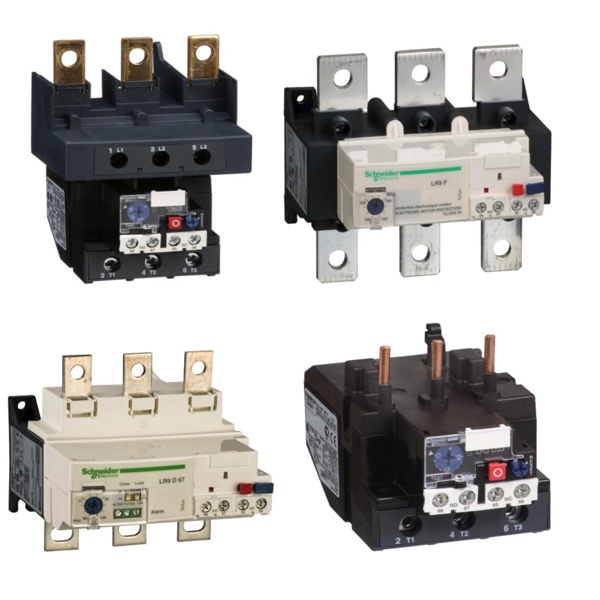IEC Electronic Overload Relays

The electronic overload relay is a basic, but very important component in motor protection. It protects electric motors against overloads, excessive heat, and phase loss. Electric overload relays are wired into the circuit that controls the motor and monitor the motor current. If the current exceeds safe tolerable amounts or if there's an abnormal condition present (such as two consecutive half-cycles of increasing current), the relay will trip. When it trips, it interrupts power to the motor, thus protecting both people and equipment from what could become a serious situation.
Electronic overload relays are adjustable and offer many types of protections. They can sense when a motor's phase currents and/or voltages are approaching or have exceeded certain thresholds. Adjustable settings let the relay be tailored to any given set of operating conditions or protected motor. Many different protection functions are built into EORs, including overload protection (OCP), phase imbalance protection (PICCO), ground fault protection (GFCI-like), and phase loss protection (VPC). So, depending on how you look at it, EORs address multiple simultaneous fault conditions for motor protection that is quite a bit more straightforward than designing a circuit that will work safely in all these half-dozen scenarios.
FAQs
Do electronic overload relays have manual reset and selectable trip class options?
Yes, electronic overload relays typically have manual reset and selectable trip classes, allowing for customizable protection settings and the ability to reset the relay after a trip condition.
Do electronic overload relays have direct mount and separate mount options?
Yes, electronic overload relays offer both direct mount and separate mount options to provide flexibility in installation and integration with motor control systems in industrial applications.
Motor Control Basics
Motor control allows operational control of electrical motors in various environments.
Motor control circuits provide a safe way to operate electrical motors. Back when motor control circuits were in their infancy, it would have been common to see a simple disconnect switch that would be used to turn on and off a motor. Depending on the size of the motor and how much voltage was required, operating this disconnect would have been dangerous, with a very high possibility of arcing or electrocution. Not to mention that when the disconnect was actuated, the large amount of inrush current would have damaged the motor over time.
In today's motor control circuits, there are a few common pieces of hardware.
A circuit breaker is used to protect the motor and any hardware downstream. A contactor and an overload relay are connected together and function in tandem to allow for remote and safe operation of the motor. The contactor functions much like a relay, allowing for a smaller electrical circuit to remotely close the motor contacts, starting the motor. The overload relay is designed to protect the motor in the case of a prolonged overcurrent event. These two devices are wired in series, so that if the overload relay detects an overcurrent event, the contactor will open the motor contacts, shutting off power to the motor.
The other two most common types of motor control hardware are a soft starter and a Variable Frequency Drive (VFD).
Both of these devices function in a similar way to the motor circuit with some added functions. The soft starter is designed to reduce large inrush current to the motor upon startup. This “soft starting” of the motor will prolong its life and allow for safer operation. The VFD performs the soft start functions, but also allows for speed control of the motor. This speed control is critical in many different environments and has made VFDs one of the most common and safe to use motor control circuits today.

